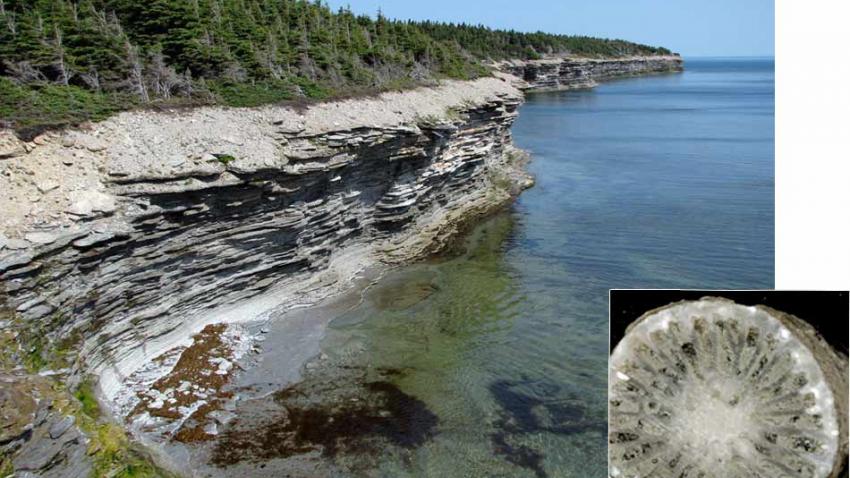Here’s a recipe for a mass extinction: Introduce a sudden ice age that piles the land with ice, and then, a few hundred thousand years later, rapidly warm the world. This one-two punch killed off about 50% of Earth’s genera 445 million years ago, ranking it as the third largest mass extinction, right below the one that wiped out the dinosaurs. Now, scientists are firmly linking the extinction to climate change, thanks to a new technique that’s allowing them to read a 445-million-year-old Prehistoric Temperature.
The technique, reported online today in Science, relies on a new way of using stable, nonradioactive isotopes—variations in the inner makeup of atoms—to gauge both ancient ocean temperatures and the amount of glacial ice in the distant past. Paleoclimatologists have long used isotopes to estimate both temperatures and ice volumes across recent ice ages. The traditional technique involves measuring two isotopes of oxygen—one heavier than the other—preserved in marine microfossils. But the method requires an independent measure of seawater composition, which isn’t available for the very early geologic record.

Rocky thermometer. A new sort of isotope analysis has extracted a temperature record from fossils (inset) in these 455-year-old rocks in Quebec, Canada. Seth Finnegan/Caltech
The new technique, called “clumped” isotope paleothermometry, requires nothing but information found in stable isotopes themselves. In the clumped approach, paleoclimatologist Seth Finnegan of the California Institute of Technology in Pasadena and his colleagues measured the conventional isotope ratio in sediments from approximately 445 million years ago. But they also measured how often the heavy isotope of oxygen was bonded to the heavy isotope of carbon in the carbonate skeletons of the microfossils. The frequency of this bonding or clumping does not vary with seawater composition, so the measurement allows scientists to calculate both ocean temperature and glacial ice volume.
Using the clumped isotope technique, Finnegan nailed down the timing and magnitude of ancient climate change. Around 445 million years ago—near the end of the Ordovician Period—he found that temperatures fell quickly by 5°C and glacial ice built up fast until the ice sheets were more massive than during recent ice ages. That was also the geologic moment when a whole raft of brachiopods and bryozoans—stalked seafloor dwellers and mossy-looking colonial organisms—disappeared. Presumably, with so much seawater going into glacial ice on land, falling sea level drained away the shallow inland seas where the victims had lived. Then, at end of the ice age perhaps a million years later, the sudden warming seems to have made it too hot for a drove of cold-loving brachiopods and trilobites, those scimitar-headed crawling creatures familiar from the Cambrian Period. They too went extinct.
“It’s a great technique,” says paleontologist Peter Sheehan of the Milwaukee Public Museum in Wisconsin. “It shows the extent of the glaciation, which has been very controversial.” And the links between climate change and extinction seem plausible to him.
Researchers are flocking to the new technique, says paleoclimatologist Ethan Grossman of Texas A&M University in College Station. “I’m impressed by these results,” he says. “There are a lot of applications” throughout the geologic record that will be keeping geologists busy.
Courtesy: Article by Richard A. Kerr,sciencemag.org,
Key: WFS,Riffin T Sajeev,Russel T sajeev,World Fossil Society



 January 21st, 2016
January 21st, 2016  Riffin
Riffin  Posted in
Posted in  Tags:
Tags: 